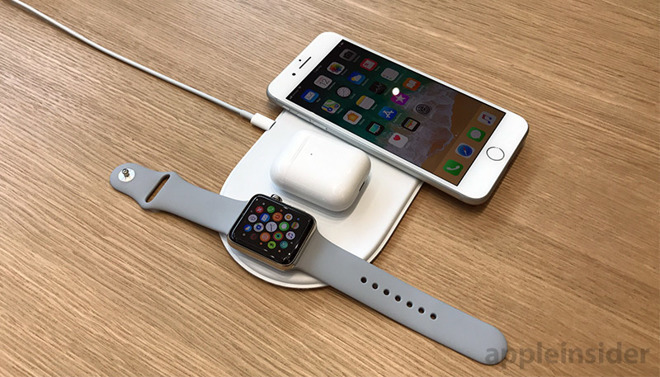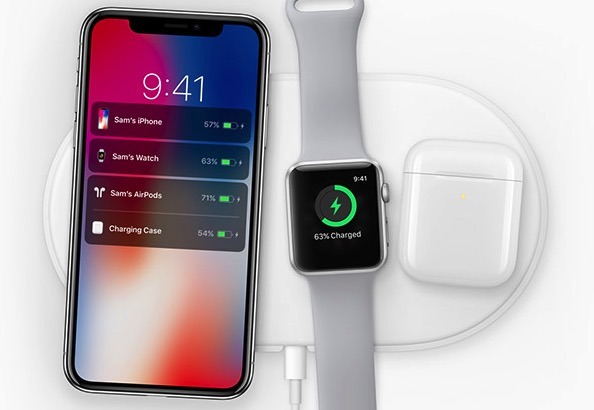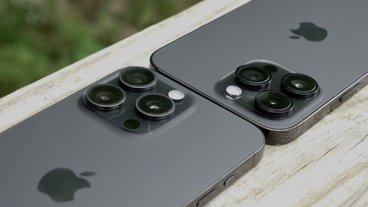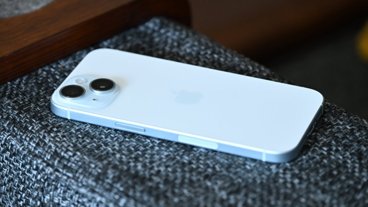What happened with Apple's wireless AirPower charging pad, and why
Apple's AirPower is in stealth mode, as the company has mostly scrubbed it from its online presence. The technology is hard to perfect, and is much more than it appears at first glance — AppleInsider tells you why.
Apple's "Gather Round" iPhone XS and Apple Watch Series 4 event was tough if you were looking forward to Apple's AirPower charging pad. In 2017, at Apple's iPhone X event, Apple teased it, promised it for 2018, and even showed us how it worked in the hands-on demonstration area after the reveal event.
But, Apple seems to have wiped it from existence online, and didn't say a thing about it onstage. Attempts by AppleInsider, and others, to get comment on the matter have been not just rebuffed, but outright refused.
So, clearly, there's something wrong, somewhere.
Qi, the standard behind Apple's wireless charging in the iPhone 8, iPhone X, pair of iPhone XS models, and the iPhone XR can be easy to execute technically, or very hard, depending on choices that charging plate manufacturers want to make and how they want the charging pad to perform.
Apple has chosen the hard road, for very good reasons.
Apple's AirPower stands alone
At present, the most common Qi implementation allows for one device to be charged by one base station. Multiple devices are allowed on one charging plate, as evidenced by a slew of copycats that have popped up since the announcement of the AirPower.
There is no specific order for devices on the AirPower, like there are on some of those copycats. A Series 3 or Series 4 Apple Watch, the as-yet unreleased AirPods Wireless Charging Case, and a compatible iPhone can be placed just about anywhere on the pad, and isn't limited to specific locations or device order.
This is implicitly allowed by the Qi standard, and the standard spells out how to do it in theory. It just appears that nobody else has done it the way that Apple is trying to do, just yet.
How Qi works
The Qi standard relies on induction between two coils, or similar structures, to deliver power to a device that needs charging. The base station contains a transmitting coil that generates a oscillating magnetic field, which induces an alternating current in the receiving field.
The coils are aligned with each other in either guided positioning relying on the user to place a device in a specific position and alignment, or hardware can be built allowing for free positioning.
Free positioning is generally used in most charging plates, with relatively minor adjustments of less than a quarter-inch made by magnetic positioning or other mechanical apparatuses.
There are many charging pads at this point with multiple physical coils. However, Apple appears to be going in a different direction.
The Qi spec also allows for free positioning to be implemented by inducing a magnetic field just at the location of the receiving coil with multiple co-operative flux generators. Devices put on a plate communicate their location and identity, and the field is only induced under the device by the flux generators operating in tandem.
Apple appears to be using this method for a trio of devices that can be placed in any order, on any location on the pad. Apple's hands-on demonstration from 2017 showed this, and AppleInsider was able to put multiple devices anywhere on the pad, in any order. After doing so, the AirPower was communicating with the charging devices, and the iPhone on the pad was displaying information about the other charging devices.
Both of these factors would account for the rumored reasons behind the delays.
Qi with actual coils and not flux generators requires very little in the way of software, and a solution requiring data transmittal is far more complex. Additionally, heat generated by the flux generators is more controllable from an engineering standpoint when you know that the physical charging coils are a fixed distance away, and will always be that distance away.
Over-promising and under-delivering never works out well
Apple said when they teased the AirPower that it had the potential to change the entire wireless charging industry. Putting three charging pads in close proximity won't do that, but AirPower's technology could — assuming they can get it right in short order.
But that brings up another point. There was no reason to debut this a year ago, even if they thought they were close. Sure, this is a failure in execution, but it is a worse one from a public perspective, and it didn't have to be.
It doesn't really matter that the erroneous assumption being made by the column-inches being slain today is that Apple doesn't have the ability to plop three simple coils next to each other — because that clearly isn't what Apple is trying to get done, here. This all could have been avoided.
We're certain that Apple has dozens of products in their skunkworks that we don't know about. A lot of hate and discontent could have been bypassed, had the AirPower stayed behind the tablecloths that Jony Ive plunks down when press comes to visit his bunker.
Multiple co-operative flux generators is clearly a tough nut to crack. It'll be tasty when it arrives, though.
 Mike Wuerthele
Mike Wuerthele












 Marko Zivkovic
Marko Zivkovic
 Amber Neely
Amber Neely
 Christine McKee
Christine McKee
 Malcolm Owen
Malcolm Owen
 Mike Wuerthele and Malcolm Owen
Mike Wuerthele and Malcolm Owen

 William Gallagher
William Gallagher








